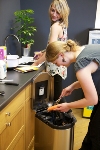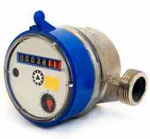EPA is inviting small businesses to nominate representatives to participate in a Small Business Advocacy Review Panel, which will focus on the agency’s development of a proposed rulemaking to strengthen and revise wastewater discharge regulations for steam electric power generating plants.
Digital video recorders, cable and other pay-TV boxes cost American consumers $3 billion a year -- $1 billion to operate when in active use and an additional $2 billion while inactive but still running at near full power.
Trojan Technologies introduces the first-ever drinking water UV systems validated to fully comply with United States federal regulations for delivering 4-log inactivation of viruses, including the highly resistant adenovirus.
Sensus, a leading utility infrastructure company, is bringing water utilities new tools to maximize resources to help utilities boost operational efficiency and customer engagement.
The U.S. Department of Energy established the first-ever regional standards for central air conditioners and furnaces, as well as strengthened national standards for heat pumps.

Computer scientists at Newcastle University have come up with a novel way of encouraging students to recycle – using a camera phone and Facebook.

It was evident at AWWA's convention and expo that meter manufacturers have responded in a number of ways to a federal mandate that will ban lead from implements that handle drinking water beginning in 2014.
Researchers examine Americans' risk beliefs and preferences for coal and nuclear energy, and finds factors other than global warming and the potential for nuclear power plant accidents figure into their choices.
Xcel Energy and Southern Minnesota Municipal Power Agency have contracted GE Energy to supply online impulse cleaning systems for their largest U.S. generating unit to save $20 million over the next six years.
A settlement has been reached with Hecla Mining Co. to resolve one of the largest cases ever filed under the Superfund statute.
Underwriters Laboratories Inc., a global leader in water quality and safety, announced today that the company has become the first laboratory approved to conduct water testing services in all 50 states and Puerto Rico.
The Global Harvest Initiative published a new policy issue brief which highlights the importance of science-based technologies in sustainably addressing the mounting challenges of global hunger and food security in order to feed an anticipated nine billion people globally by 2050.
American Water Works Co., the largest publicly traded U.S. water and wastewater utility company, is proud to announce the receipt of 15 Directors Awards of Recognition from the Partnership for Safe Water.
Manchester Water Works sought to install a water main line that would go under the 900-foot Merrimack River, New Hampshire’s largest river, and cross the Pan Am Railway that runs adjacent to the river, with the least possible impact to the environment.
New wastewater technologies can appear faster than E. coli after a thunderstorm, yet their adoption and resulting benefits can be slowed or derailed by common issues that can be solved or avoided.
The 14.1-megawatt solar system will significantly offset the need for other energy sources to run McGraw-Hill's offices in East Windsor, including the corporation's growing data center.
Dow Water & Process Solutions opened the Global Water Technology Development Center in Tarragona, Spain. The state-of-the-art center is designed to accelerate the commercialization of Dow’s technologies that make possible the production of clean water.
The streets of New York City may be just as urban as ever, an unending view of steel and concrete, but for the 700 students of PS 333 on New York City's Upper Westside, a trip to the farm is only a few stair flights away.
Under the requirements of the law, EPA will gather information on what nanoscale materials are present in pesticide products to determine whether the registration of a pesticide may cause unreasonable adverse effects on the environment and human health. The proposed policy will be open for public comment.
Using the liver as an “alarm system,” researchers are starting to better understand the different levels of toxicity from pesticide compounds and their effects on the human body.